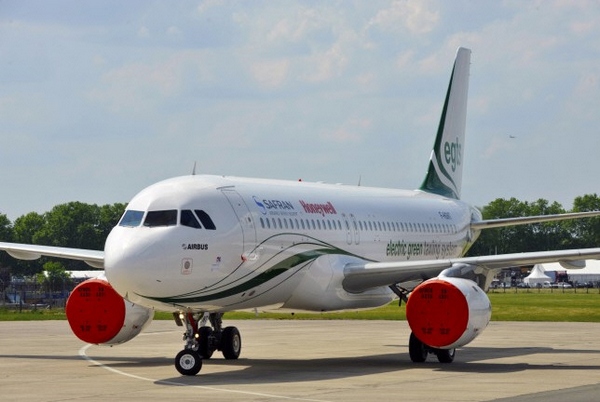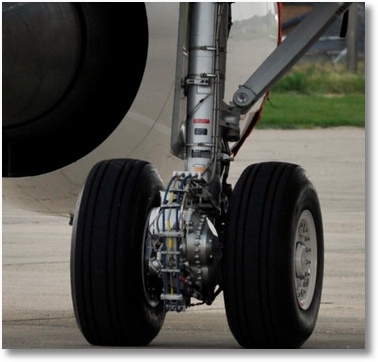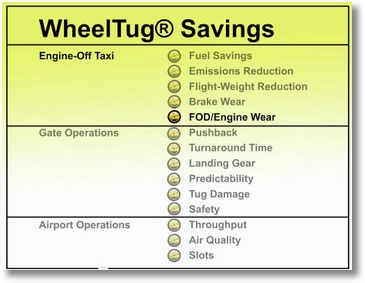A surprisingly innovative bit of engineering could herald a new breed of aircraft which combine electric power with conventional engines to deliver significant fuel savings over the course of a year. The new system doesn’t power the plane in flight, but instead provides motive power on the ground, for taxiing to and from terminals and while queuing to take off.
Since a conventional passenger plane consumes around 600 kilos/hour with both engines running while taxiing, but the new EGTS (electric green taxiing system) only uses around 100 kilos/hour, which for short range jets with their multiple quick turnaround at airports could mean a big cost saving.
<photo: Wired>
The system is based around 50kVA electric motors which are integrated between the two main landing wheels on the plane. The motors drive the outside wheel on the pair, and use power from the on-board auxiliary power unit which is used for air-conditioning and other electronic services while the aircraft is on the tarmac.
The 660 pound motors can not only save on fuel, but will give the aircraft more independence from airport services. For example the motors have a reverse gear which means the pilot could do his own ‘push-back’ from the terminal stand, and taxi to the runway under electric power, without need a tug to help him out. The plane could also delay starting the engines until ready to take-off (which in crowded airports can be up to an hour after push-back) so saving more fuel and money.
UK budget airline EasyJet has already jumped on board to start testing the new system, and trials have already started in France to test out real world performance.
A similar technology called WheelTug also aims to deliver the same kind of benefits but through use of a single electric motor on the nose wheel, which again takes over the task of taxiing and push-back on demand. The company has already secured orders for over 200 aircraft and has customers such as AirBerlin, Alitalia and KLM under their belt. Again, the benefits include not just fuel savings, but quieter airport environments and improved air quality at airports due to delayed start up of engines.
https://youtu.be/tvHwaFwQ_LY






